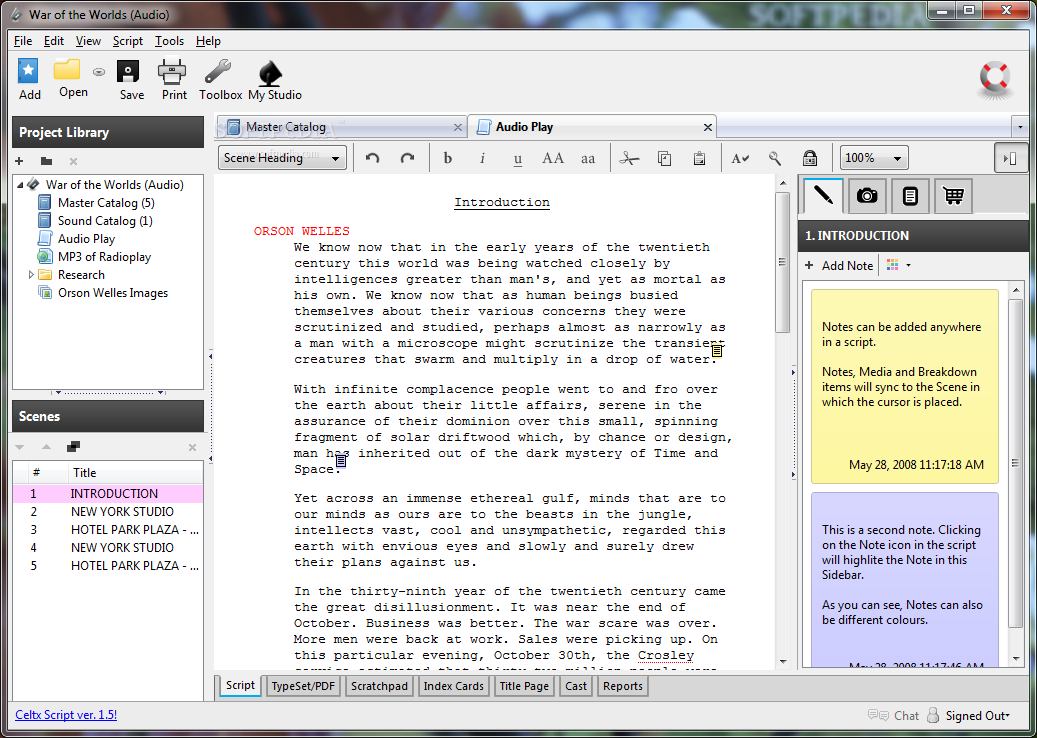

More to the point: read the script from an outsider’s perspective to better appreciate its end goal. If they don’t understand your story’s creative value or see the bigger picture of how it can impact its viewers or convey a meaningful message, you’re stuck in a kitchen with uninspired cooks. This doesn’t just apply to your potential audience members it’s just as important that you create these connections with your crew members as well. Regardless of your familiarity with the source material, thoughtfully performing a script breakdown requires an objective appreciation for what makes the script appealing and how it should be represented on screen in order to make those all-important emotional connections.Īfter all, that’s what this visual medium is - a language of light and images designed to elicit emotion reactions, whether that’s anger, fear, laughter, heartbreak, suspense, or any combination in between.

“But I wrote this script and I know every single word within it like the back of my hand,” says the defensive screenwriter, but that’s beside the point. Whether you’re a screenwriter more familiar with your story than anyone else or a producer/production manager/1st AD reading the script for the first time, an integral part of the script breakdown process is performing a full, objective read-through of the script to appreciate its creative appeal as an audience member. Read (and Understand) The Script As an Audience Member This will automatically help format your script for you in an easy, modern and efficient manner.

#Celtx script margins software
Dive in!īut actually, before moving forward, you should try using a free script breakdown software like Celtx. So, what actually goes into a script breakdown and what do you need to know to take the next steps towards turning your storytelling passion into a production-ready action plan? Everything you need to know about script breakdowns is detailed below in our ultimate tell-all guide.
#Celtx script margins how to
More often this is the responsibility of either 1) the producer, who in an effort to get your script financed and supported, needs to create a tangible and high-level plan for department heads and network/studio executives to understand, or 2) a 1st Assistant Director (or 1st AD) responsible for understanding how to actually shoot your script and delegating that shooting plan to the rest of the crew members. Keep in mind: in the upper echelons of Hollywood, this job is rarely done by the screenwriter themselves. It’s a conversion from story-driven creative document into a concrete, accessible production plan that every member of a production crew can interpret. Think of it as a translation from “creative ideas” to “production to-do’s,” or as an adaptation from “detailed recipe” into a digestible “list of ingredients” that production managers can use to actually bring your script to life.Ī script breakdown is the in-depth process of tagging, highlighting, and organizing each and every “element” of your script scene-by-scene to fully understand every requirement needed to prepare, budget, schedule, and ultimately film your entire screenplay. The next organic step in the writing, production, or creative process is converting your proud screenplay into a production-ready blueprint that paves a logistical road for crew members to follow and execute.


 0 kommentar(er)
0 kommentar(er)
